Famous for its funky toys, radio hits 24/7, fashion, and most importantly, the rock and roll style of living life, the era of 1950 had much more to offer its fans – and when I say much more, I really mean it.
Now, here’s the question:
Are you a fan of rock and roll music like me? Then you’re in a proper treat.
You’ve made the right click, to say the least.
This musical genre, which is marked by its dynamic rhythm and rebellious themes, as you could’ve probably guessed, became pretty much the anthem of teenage rebellion, as it should.
With Elvis Presley and Chuck Berry being the icons they are, the music world was rocked, and never the same again.
The jukebox was filled with rebellious anthems, and parents of the older generation were not used to this music – they were left bewildered, to say the least, by the 1950s songs. Bet they didn’t have the slightest idea it would mark one entire era.
Drum roll, let’s get into it!
Let’s get shakin’ and enter the world of icons like Elvis Presley, Johnny Cash, Johnny Mathis, and other pop stars.
Billboard Chats in the 1950s Rock and Roll Hall
In the 1950s music, the Billboard charts went through a, some would say, radical transformation. And that’s just the beginning, believe me. They mirrored the rise of rock music that resonated with youth culture.
Rock artists, such as well-known figures like Elvis Presley and Chuck Berry, showcased their dominance during this exotic period and captivated audiences worldwide.
You could say everybody was too stunned to speak.
Trends & Statistics You Might Like (Or Know)

What’s buzzing, cuzzin? It’s always interesting to peek at some starts, so here they are:
Elvis Presley’s Dominance:
The “King of Rock and Roll” consistently topped the charts, with hits like “Heartbreak Hotel,” spending a staggering 27 weeks at No. 1 on the list.
Chuck Berry’s Success:
Berry’s hits, such as “Maybellene” and “Roll Over Beethoven,” showcased his innovative guitar style and lyrical prowess.
Beethoven ain’t got nothin’ on Chuck; so check here:
Now, this is a real jam!
Rock’s Takeover:
Rock ‘n’ roll anthems like Little Richard’s “Tutti Frutti” and Buddy Holly’s “Peggy Sue” stormed the rankings.
Heard of Peggy Sue? Here it one more time:
Some fans even commented: ‘No gimmick, no frills, no smoke and mirrors, just solid songwriting that has never aged. Genius.‘
No joke – this is one of my personal favorites, if I don’t count Jailhouse Rock.
Teenage Anthems:
Rock songs really spoke to the youth. Songs like “Rock Around the Clock” became anthems of teenage rebellion.
Here’s one oldie, but goldie!
It’s time to jiggle around and make your own playlist, maybe even share it with me.
Elvis Presley
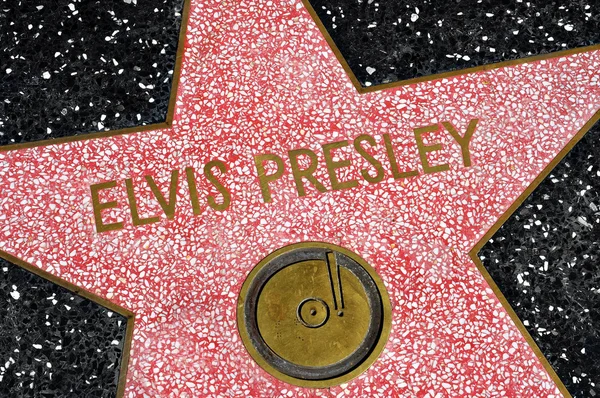
There is no better way to continue the 1950s rock and roll story than with the King himself.
Often hailed as the “King of Rock and Roll,” Elvis did nothing short of revolutionizing the music industry and captivating audiences worldwide with his dynamic performances and charismatic persona. You can check out our blog about Elvis’s ancestry DNA to learn more!
Born on January 8, 1935, Elvis grew up immersed in gospel and blues.
His breakthrough came in 1956 with the release of “Heartbreak Hotel,” which we’ve mentioned already (not too many times, I think).
However, his electrifying performance and the whole lotta shakin of “Hound Dog” on The Milton Berle Show sent shockwaves through conservative America. These were the best-known calypso music examples of the time.
Elvis’s provocative hip movements and facial expressions during the 1956 performance were deemed scandalous.
Did you know the song faced bans on several radio stations due to its suggestive lyrics? Damn!
Jailhouse Rock (1957)
In 1957, Elvis continued to push boundaries with “Jailhouse Rock,” one of the earliest rock and roll music videos ever produced. The video’s depiction of Presley as a prisoner and its sexual undertones stirred controversy.
Wanna dance?
Here’s the famous video up-close:
Did you know? His ‘Blue Suede Shoes’ was a cover that he did. Carl Perkins wrote the original song, the first rockabilly song, and a major hit.
Elvis’s personal life also garnered attention. His marriage to Priscilla Beaulieu in 1967 and the birth of their daughter, Lisa Marie, added layers to his public image. During his army enlistment, Elvis Presley managed to record “A Big Hunk O’ Love” in the sole studio session.
On another note, Ricky Nelson’s rendition of “Poor Little Fool,” often considered the ultimate teen idol anthem, is a testament to the songwriter Sharon Seeley’s teenage experience with Don Everly.
She pitched the song to Ricky Nelson, making her the youngest woman to pen a Number One hit in America.
This lonely boy turned solo artist’s later years were marked by health struggles and substance abuse, leading to his untimely death on August 16, 1977, at the age of 42.
Elvis Presley’s impact on the music industry and popular culture is immeasurable.
Buddy Holly
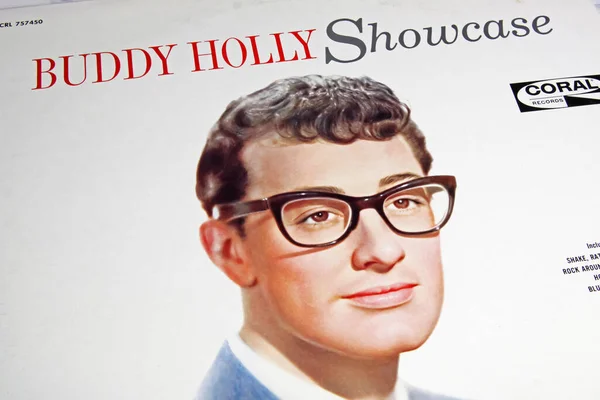
Buddy Holly, born Charles Hardin Holley on September 7, 1936, in Lubbock, Texas, was a figure in the rock and roll movement of the 1950s. Soon, he developed a passion for music from an early age; Holly and his band, The Crickets, played a crucial role in shaping the genre.
Holly’s breakthrough came with hits like “Peggy Sue” and “That’ll Be the Day,” both released in 1957.
Here’s a snippet from his song on The Ed Sullivan Show:
His distinctive vocal style, blending country, rock, rhythm, and blues, set him apart in an era dominated by traditional pop and crooners. The controversy surrounding “Peggy Sue” and “That’ll Be the Day” reflected Holly’s willingness to challenge societal norms through his music.
Here’s an explanation: The controversy stemmed from the lyrics and themes of the songs, which were considered provocative and rebellious during the conservative atmosphere of the 1950s.
Buddy Holly tragically passed away in a plane crash on February 3, 1959, along with fellow musicians Ritchie Valens and J.P. “The Big Bopper” Richardson. The event, referred to as “The Day the Music Died,” had a profound impact on the music industry and fans worldwide.
Peggy Sue (1957)
The song “Peggy Sue” tells the tale of a young man expressing regret over losing his girlfriend, Peggy Sue. The controversy arose due to the perceived implications of the lyrics, with some interpreting the song as promoting promiscuity and teenage rebellion.
That’ll Be the Day (1957)
Moving on, in “That’ll Be the Day,” Buddy Holly’s lyrics express a desire to break free from societal constraints. The rebellious nature of the song contributed to its controversial status.
Both songs symbolized the cultural shifts occurring in the late 1950s.
Holly was a trailblazer in the recording studio. He introduced innovative techniques, including double-tracking his vocals, which became a standard practice in the industry. Despite his short career, Holly’s influence on rock and roll was profound.
Tragically, on February 3, 1959, Holly, along with Ritchie Valens and J.P. Richardson, perished in a plane crash, an event immortalized as “The Day the Music Died.” ‘
Buddy Holly’s legacy symbolizes youthful rebellion and innovation in rock and roll.
Fats Domino
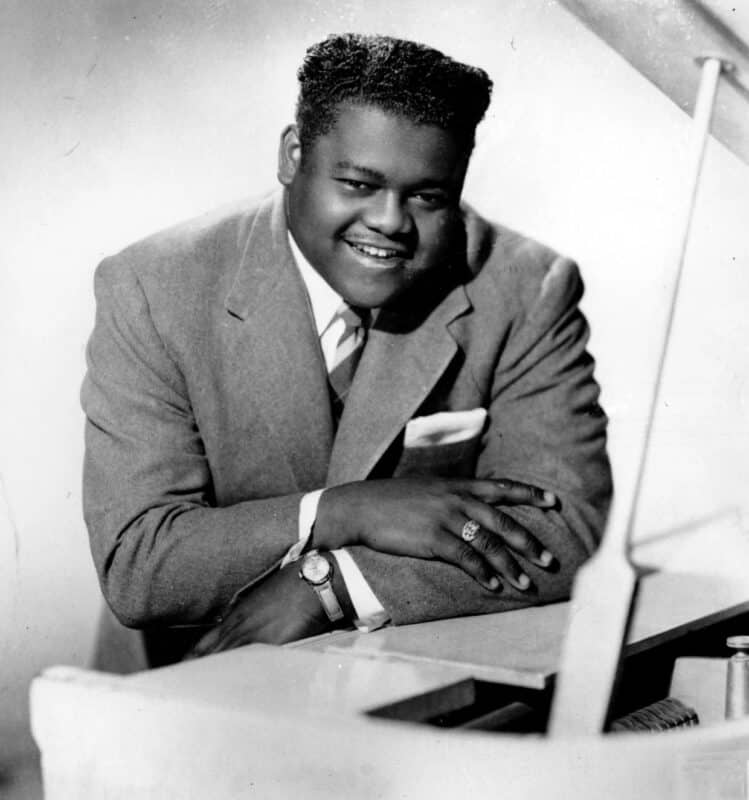
Credits: dailystar.co.uk
It’s time to take a trip down memory lane!
Fats Domino, born Antoine Domino Jr. on February 26, 1928, in New Orleans, Louisiana, was a popular figure in the world of rhythm and blues (R&B) and rock and roll during the 1950s. Domino played a crucial role in bringing “race music,” a term used for R&B.
His groundbreaking hits, such as “Blueberry Hill” (1956) and “Ain’t That a Shame” (1955), not only showcased his musical prowess but also stirred controversy due to their provocative lyrics.
‘Ain’t That Shame‘ is a banger, if I may say so:
In ‘Ain’t That Shame,’ Domino narrates the story of a young man left heartbroken after his girlfriend’s departure.
The “Blueberry Hill” revolves around a young man’s unfaithfulness to his girlfriend, and its sexual undertones led to its ban on some radio stations.
If you’re a fan, check this out.
Little Richard
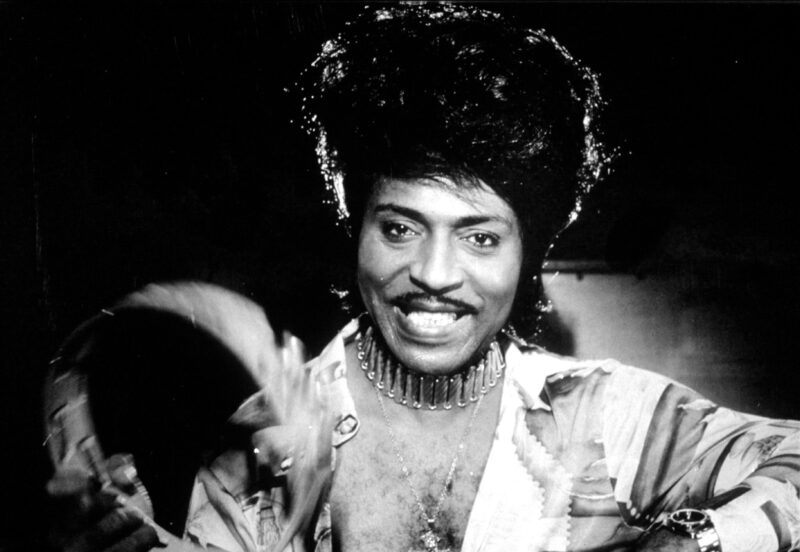
Little Richard, born Richard Wayne Penniman on December 5, 1932, in Macon, Georgia, was a force in the early years of rock and roll. He shocked mainstream audiences during the 1950s.
He displayed a prodigious musical talent early on, influenced by gospel and R&B.
His breakthrough came with the release of “Tutti Frutti” in 1955, a groundbreaking hit that showcased his vocal prowess and stirred controversy due to its sexually suggestive lyrics and Little Richard’s electrifying stage persona.
Here’s a performance of ‘Tutto Fruitti‘ for all the music lovers:
“Long Tall Sally” (1955)
He continued to push boundaries with hits like “Long Tall Sally” (1955). His energetic stage presence caused bans on some radio stations and brought him into the spotlight of cultural scrutiny.
Little Richard’s undeniable talent and fearless approach to his craft solidified his status as a key figure in the evolution of rock and roll.
He left an undeniable mark on the cultural landscape.
Everly Brothers
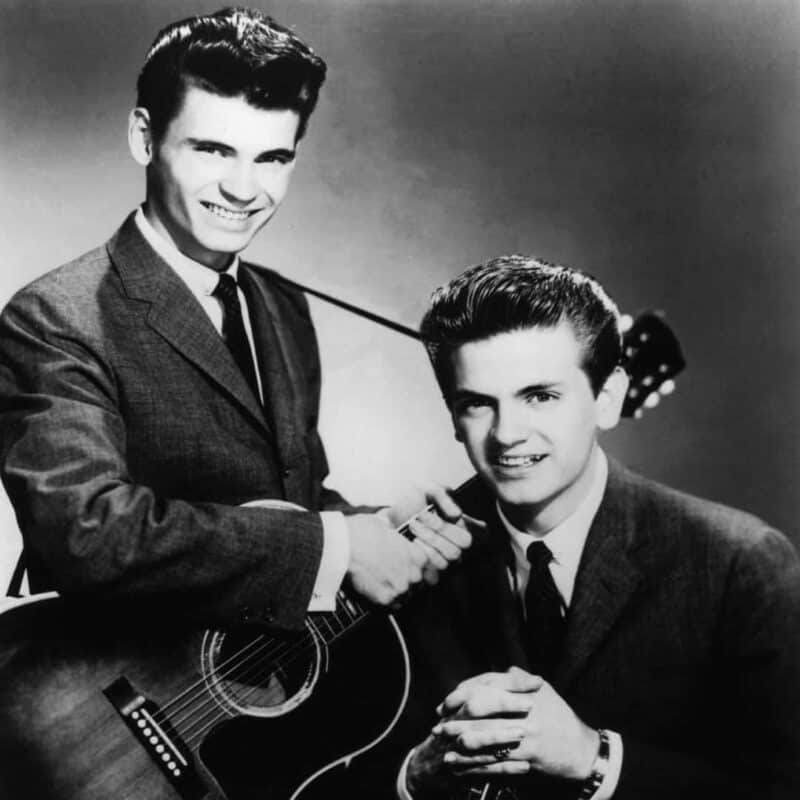 Credits: countrymusichalloffame.org" width="800" height="800" title="1950s Billboard Teen Rebellion Hit Songs That Parents Hated">
Credits: countrymusichalloffame.org" width="800" height="800" title="1950s Billboard Teen Rebellion Hit Songs That Parents Hated">Don and Phil Everly were influential figures in the rock and roll and country genres during the late 1950s and early 1960s.
Born in Kentucky, Don on February 1, 1937, and Phil on January 19, 1939, they did a splendid job of harmonizing and creating a distinctive sound that left an indelible mark on the music landscape.
They began performing together at an early age.
Their breakthrough came with hits like “Bye Bye Love” (1957), a controversial song due to its lyrics depicting a young man bidding farewell to his girlfriend.
Some interpreted it as promoting promiscuity and teenage rebellion.
Here’s the video:
“Wake Up Little Susie” (1957)
“Wake Up Little Susie” (1957) sparked controversy with its narrative of a young couple falling asleep in a car after a dance. Their close harmony singing style inspired numerous artists and laid the groundwork for the folk rock and country rock movements of the 1960s and 1970s.
The brothers continued to produce hits throughout their careers.
Other Notable Artists
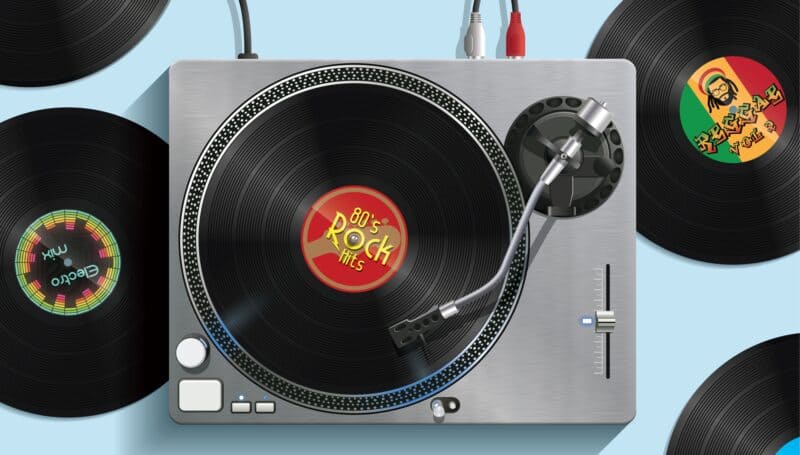
Artists like Chuck Berry, Jerry Lee Lewis, Bill Haley & His Comets, and Carl Perkins produced some of the biggest songs of the time, and there’s no reason not to include them.
Listen up, folks!
Chuck Berry – Johnny B. Goode (1955)
“Johnny B. Goode” is one of Chuck Berry’s biggest songs and an anthem of teen rebellion. However, the controversy surrounding the song transcended the typical rebellious narrative.
Jerry Lee Lewis – Great Balls of Fire (1957)
“Great Balls of Fire” remains one of Jerry Lee Lewis’s best-known songs. The suggestive lyrics and Lewis’s energetic stage presence contributed to the song’s controversial nature, leading to bans on some radio stations.
Bill Haley & His Comets – Rock Around the Clock (1954)
“Rock Around the Clock” is synonymous with early rock and roll and is considered one of Bill Haley & His Comets’ biggest songs. It gained further notoriety when it was blamed for inciting riots at movie theaters showing the film Blackboard Jungle.
Carl Perkins – Blue Suede Shoes (1955)
“Blue Suede Shoes” catapulted Carl Perkins to fame as one of his biggest hits. Perkins’s unique style and contribution to early rock and roll solidified his place in music history, especially through Sun Records.
These artists, each with their biggest songs, played pivotal roles in shaping the early rock and roll landscape.
While their music became timeless, the controversies surrounding their work mirrored the societal shifts and anxieties of the time.
Other Interesting Info

Here are some more interesting facts that I might have missed:
Dean Martin
The charismatic crooner, known for his smooth voice and Rat Pack affiliation, highlighted the cool and sophisticated side of the 1950s entertainment scene.
Nat King Cole
Nat King Cole’s velvet vocals graced the airwaves with hits like “Unforgettable” and “Mona Lisa.”
Originally Recorded
Several influential tracks found their origins in the 1950s, including “Billie Jean Jones” by Bobby Darin.
Summertime Blues

Eddie Cochran’s rebellious anthem, “Summertime Blues,” represented the teenage experience and the frustration of societal expectations.
Ray Charles
The genius of Ray Charles transcended genres, blending R&B, gospel, and jazz. His unique sound and hits like “What’d I Say” left an indelible mark on the music landscape.
Joe Cuba’s Mambo
Joe Cuba’s mambo rhythms brought Latin influences into mainstream music.
Paul Anka
Paul Anka’s “Diana” became one of the important songs of the 1950s.
Bobby Darin
From his debut single “Splish Splash” to the timeless “Mack the Knife,” Bobby Darin’s versatility and charisma defined the early rock era.
Frank Sinatra

The Chairman of the Board, Frank Sinatra, continued his reign with hits like “Love and Marriage” and “High Hopes,” solidifying his status as a cultural icon.
Mexican Folk Song
Ritchie Valens infused the rock and roll scene with his Mexican heritage, most notably in his rendition of the traditional song “La Bamba.
Justin Timberlake
While not from the 1950s, Justin Timberlake’s modern interpretation of music draws inspiration from the era’s pioneers, showcasing the ongoing influence of these musical roots.
Love Frankie Lymon
The heartbreaking tale of Frankie Lymon, the teenage sensation behind “Why Do Fools Fall in Love,” reflects the highs and lows of early fame.
Unique Sound
The emergence of artists like Little Richard, with his flamboyant style and unique sound, challenged conventions and paved the way for future generations.
B-Side
The B-side of a record often became the unexpected hit, as demonstrated by Elvis Presley’s “Hound Dog” and its flip side, “Don’t Be Cruel.”
Big Mama Thornton
Before Elvis, Big Mama Thornton’s original recording of “Hound Dog” showcased a raw and powerful rendition that influenced the rock and roll landscape.
Debut Single
James Brown’s debut single, “Please, Please, Please,” marked the beginning of a legendary career in soul and funk.
Billie Holiday
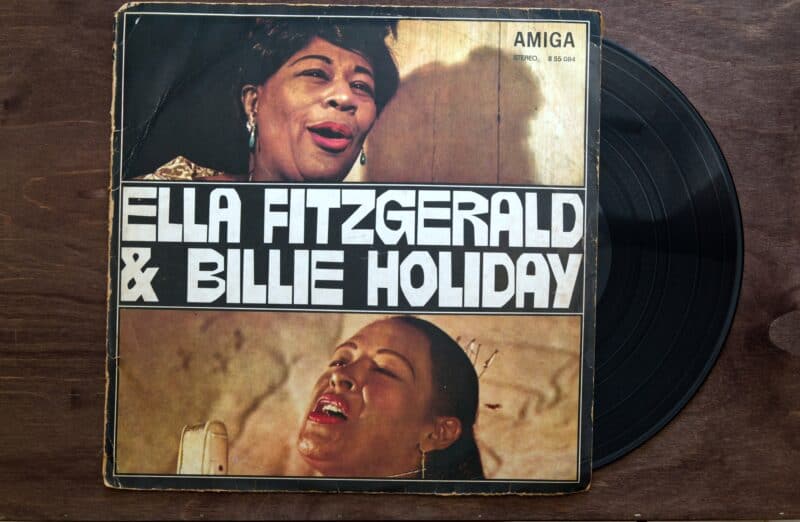
The haunting voice of Billie Holiday continued to resonate with poignant tracks like “Strange Fruit,” making her an enduring figure in jazz.
Among the finest mariachi songs ever produced is Billie Holiday’s poignant “Lady Sings the Blues.”
Featured as the title track on her 1956 album, this mournful piece serves as a self-declaration encapsulating Holiday’s life and musical style.
Paul McCartney
The Beatles’ Paul McCartney, influenced by the classics, contributed to the evolution of pop and rock music in the later part of the 20th century.
Sam Cooke
Sam Cooke’s smooth vocals and hits like “You Send Me” epitomized the soulful side of the 1950s.
Heartbreak Hotel
Elvis Presley’s “Heartbreak Hotel” dominated the charts for nine weeks.
Nine Weeks
The enduring popularity of Sheb Wooley’s “The Purple People Eater” kept it at the top of the charts for nine weeks.
Perry Como
Perry Como’s easygoing style and hits like “Catch a Falling Star” made him a beloved figure in the era’s music scene.
Patti Page
Patti Page’s “Tennessee Waltz” became a cultural phenomenon.
Teddy Bear
Elvis Presley’s “Teddy Bear” captured the hearts of fans.
Summing Up
The 1950s music was woven with diverse threads and artists, including famous musicians in the 1950s like Elvis Presley, Chuck Berry, and Little Richard.. It all contributed to this vibrant era becoming so popular even today.
The artists left an indelible mark on the cultural landscape. The emergence of rock music, propelled by pioneers like Elvis Presley, Chuck Berry, and Little Richard, forever changed the course of musical history.
As we reflect on the timeless classics of the 1950s, it’s evident that the spirit of rock music continues to captivate contemporary audiences. Fans today still find themselves drawn to the raw energy and rebellious spirit that characterized the rock and roll era.
The echoes of 1950s rock persist even today, and they connect the past with the present and ensure that the heartbeat of this transformative era lives on.
